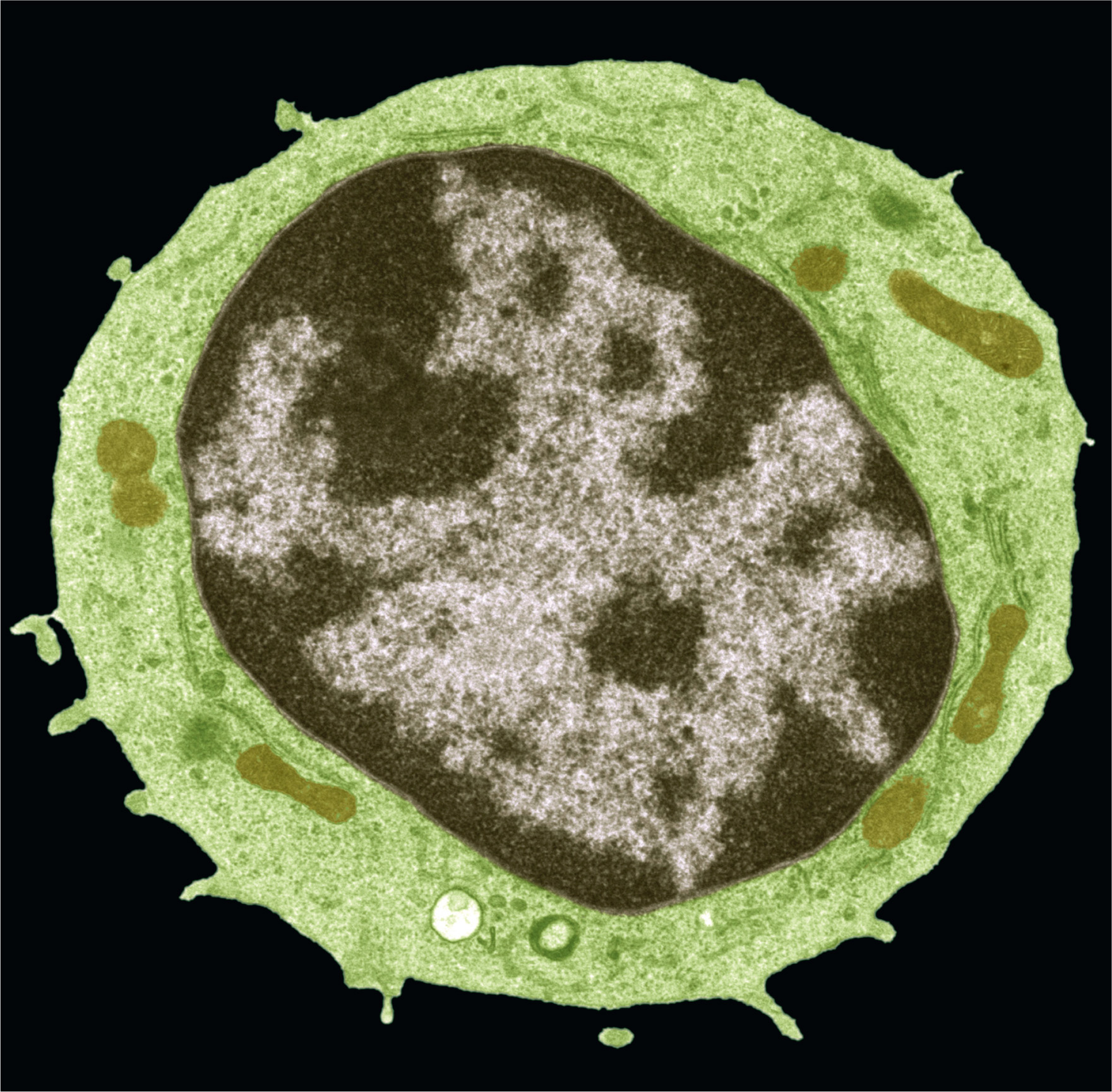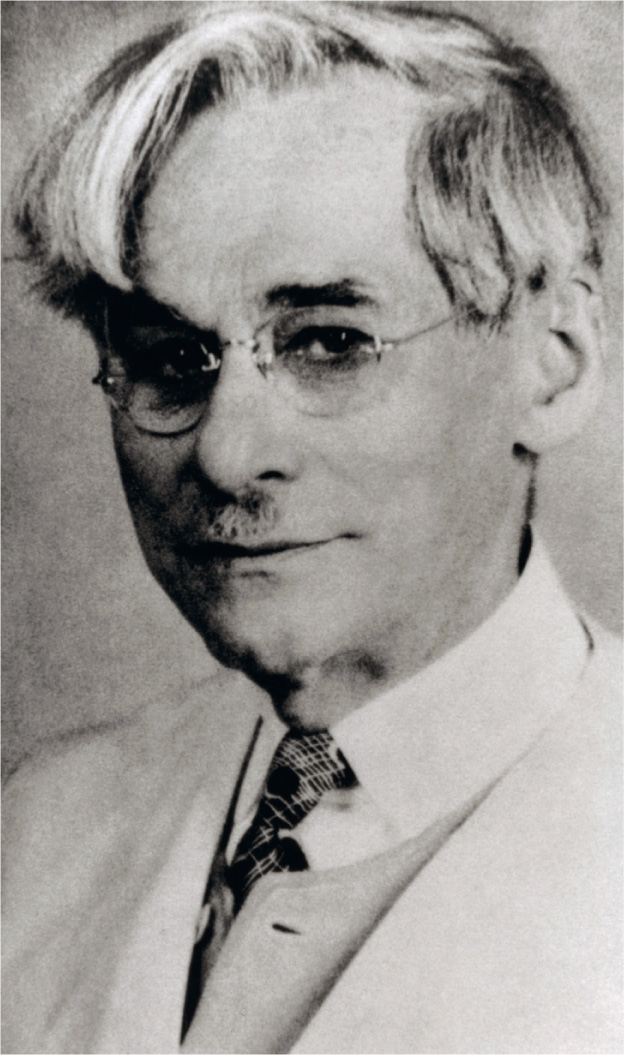
Coloured transmission electron micrograph (TEM) showing the large central nucleus (brown) of a small lymphocyte (white blood cell). Surrounding this is the cytoplasm (light green), containing mitochondria (darker, solid green).
Some discoveries are hard to pin down to one experiment, or one person. The ‘discovery’ of the life molecules RNA and DNA involved many people and many experiments, over nearly a hundred years. But the person who actually gave these molecules their names was Phoebus Levene, a Russian-born American working at the Rockefeller Institute of Medical Research.
The story really begins, however, with experiments carried out by a Swiss biochemist, Friedrich Miescher, working at the University of Tübingen in the 1860s. By that time, it was known that proteins are the most important physical substances in the body, and Miescher wanted to identify the proteins involved in the chemistry of the cell – a key to the workings of life. He got his raw material from pus-soaked bandages obtained from a nearby surgical clinic, and isolated the white blood cells known as leucocytes from the pus. Living cells are like little bags of watery jelly, called cytoplasm, with a more compact central nucleus (the term Rutherford later borrowed to describe atomic structure). Miescher found that the watery jelly is indeed rich in proteins, but he was also able to remove this outer material and collect enough nuclei to analyse them separately. He found that the nuclei were not made of protein, but of a different material, which he dubbed ‘nuclein’. Just like other molecules of life, it contained a lot of carbon, hydrogen, oxygen, and nitrogen, but it also contained phosphorus, which is not found in any protein. He wrote, ‘I think that the given analyses – as incomplete as they might be – show that we are not working with some random mixture, but … with a chemical individual or a mixture of very closely related entities.’ But he was not able to work out the structure of the large nuclein molecules. In later work, he found that these molecules contain several acidic groups, and the term ‘nucleic acid’ began to be used to describe nuclein by the end of the 1880s.

In the following years, analysis of nucleic acids showed that there are two types. One contains four sub-units, known as bases, with the names adenine, guanine, cytosine, and thymine – often referred to by their initials as A, G, C and T. The other nucleic acid contains a different base, uracil (U), instead of thymine.
This was the state of play in the second half of the first decade of the twentieth century, when Phoebus Levene began experimenting with nucleic acid derived from yeast cells. This contained about equal amounts of A, G, C and U, plus phosphate groups and a carbohydrate group that had not than been identified. In 1909 he isolated and identified this as a sugar group, ribose. The sugars themselves are each built around carbon rings, similar to the ones Kekulé described (see here), but with four carbon atoms and one oxygen atom linked, forming pentagons instead of hexagons. Levene showed that the components of the nucleic acid are themselves linked in units each made up of one phosphate, one sugar and one base, and he called these units nucleotides. Nobody knew, however, how the components of the nucleic acids were joined together.
Levene’s idea was that the nucleic acid molecule was made up of a string of these nucleotides, joined together like the vertebrae of your spine, and in 1909 he gave the name ribosenucleic acid to the molecule. As there were four bases present in equal numbers in what became known as RNA, he suggested that each molecule was made up of a short chain of four nucleotides, one with each of the four bases. This became known as ‘the tetranucleotide hypothesis’, and held sway for decades. One consequence of this was that it reinforced the prevailing idea that the really important molecules of life are all proteins, and that the nucleic acids simply provided some sort of scaffolding to which protein molecules were attached.

It wasn’t until 1929 that Levene discovered that the nucleic acid derived from thymus cells contains a different sugar group, as well as having T instead of U. Because each molecule of this sugar group has one oxygen molecule less than a corresponding ribose group, he called it deoxyribose, and the nucleic acid became known as deoxyribosenucleic acid. The names of the two nucleic acids are often shortened slightly to ribonucleic acid (RNA) and deoxyribonucleic acid (DNA). Levene still thought that the nucleotides in a DNA molecule are always linked in the same order, perhaps ACTG, ACTG, ACTG and so on. But the first clue that there is something more to DNA than mere scaffolding had already emerged in 1928, the year before DNA was named (see here).